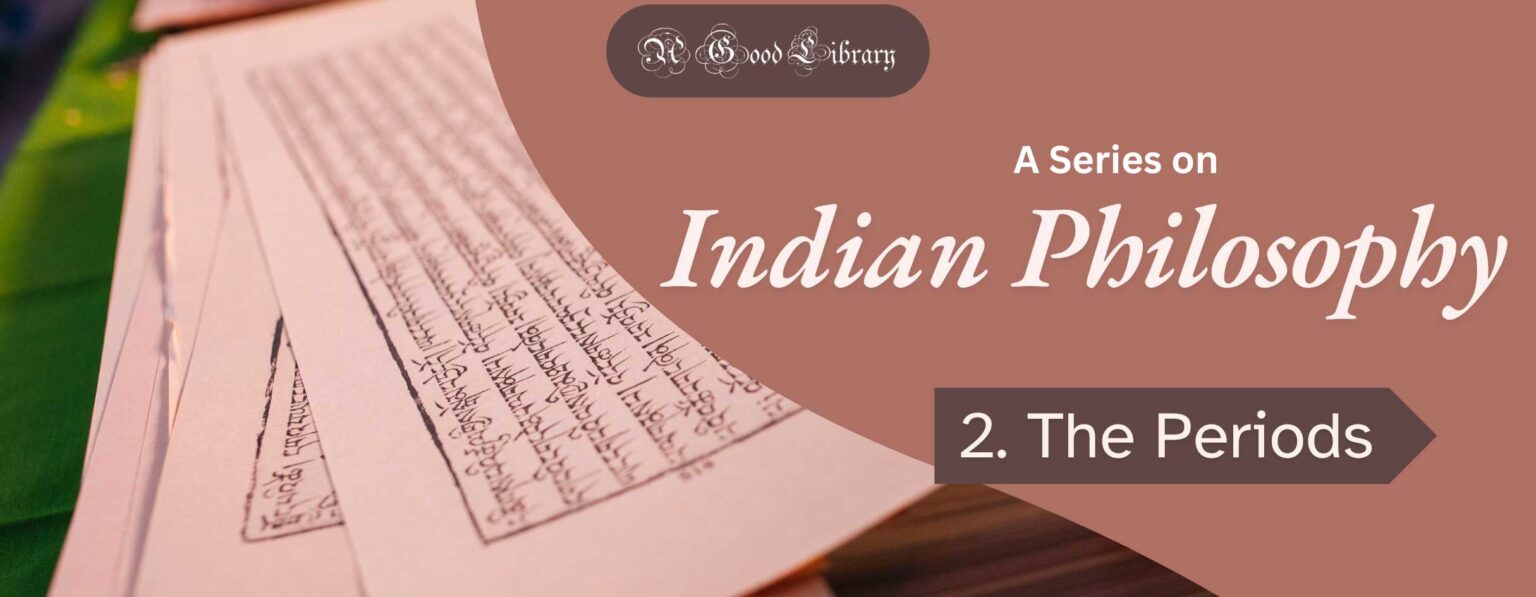| Period | Timeframe | Key Characteristics & Developments | Important Texts/Concepts | Major Schools/Movements |
| Vedic Period | 2500 – 600 BCE | – Earliest philosophical stirrings in India, embedded in hymns and ritualistic texts. – Emergence of core concepts like Brahman, Atman, Karma, Samsara, and Moksha. – Focus on cosmic order (rita), divine relations, and the power of sacrifice. | – Vedas: (Rigveda, Samaveda, Yajurveda, Atharvaveda) – Brahmanas: Commentaries on Vedic rituals. – Aranyakas: Forest treatises, philosophical interpretations of rituals. – Early Upanishads: (e.g., Brihadaranyaka, Chandogya) Deep philosophical inquiries into ultimate reality and the self. | – Proto-Vedanta (through the Upanishads). |
| Epic Period | 600 BCE – 200 CE | – Philosophical ideas presented within epic narratives, focusing on dharma, ethics, and societal roles. – Emergence of Heterodox Systems: Challenge to Vedic orthodoxy, emphasis on individual liberation and different paths to spiritual realization. – Growth of early Samkhya and Yoga ideas. | – Mahabharata: (including Bhagavad Gita) Discussions on dharma, karma yoga, jnana yoga, bhakti yoga. – Ramayana: Ideals of duty and righteousness. – Early Buddhist texts (Pali Canon): Four Noble Truths, Eightfold Path, Anicca, Anatta, Dukkha. – Early Jain Agamas: Anekantavada, Syadvada, Ahimsa. | – Heterodox Systems: Buddhism, Jainism, Charvaka (Lokayata). – Early forms of Samkhya and Yoga. |
| Sutra Period / Scholastic Period | 200 CE – 17th Century CE | – Systematization and Codification: Major philosophical schools (both orthodox and heterodox) develop their foundational aphoristic texts (Sutras) and subsequent, extensive commentaries (Bhashyas, Varttikas, Tīkās). – Intense Philosophical Debates: Characterized by rigorous logical and epistemological arguments between schools. – Development of distinct theories of knowledge (pramanas), metaphysics, ethics, and paths to liberation. | – Sutras: Nyaya Sutras, Vaisheshika Sutras, Samkhya Sutras, Yoga Sutras, Purva Mimamsa Sutras, Brahma Sutras (Vedanta). – Major Commentaries: e.g., Shankara’s Bhashyas on Upanishads, Brahma Sutras, and Bhagavad Gita; Vacaspati Mishra’s Tattvakaumudi (on Samkhya), etc. – Buddhist Philosophical Texts: Nagarjuna’s Madhyamaka Karikas, texts from Yogachara school, Dignaga’s Pramanasamuccaya. | – Orthodox (Astika) Schools: Nyaya, Vaisheshika, Samkhya, Yoga, Purva Mimamsa, Vedanta (Advaita, Vishishtadvaita, Dvaita, etc.). – Heterodox (Nastika) Schools (continued development): Buddhism (Madhyamaka, Yogachara, etc.), Jainism. |
| Modern and Contemporary Indian Philosophy | 17th Century CE onwards | – Response to Colonialism and Western Thought: Engagement with Western philosophy, science, and political ideas. – Revival and Reinterpretation: Reinterpretation of classical Indian philosophical concepts, often with an emphasis on social reform, nationalism, and universal ethics. – Influence of prominent spiritual leaders and reformers. – Participation in global philosophical discourse. | – Works of Mahatma Gandhi, Rabindranath Tagore, Swami Vivekananda, Sri Aurobindo, Sarvepalli Radhakrishnan, J. Krishnamurti, B.R. Ambedkar, and others. – Texts on Integral Yoga, Neo-Vedanta, Dalit Philosophy, and modern spiritual thought. | – Neo-Vedanta, Integral Yoga (Sri Aurobindo), Gandhian Philosophy, Dalit Philosophy, various forms of Humanism and Universalism. |
It’s essential to note that these periods aren’t entirely distinct. They often mix and grow into each other. For example, the “Sutra Period” is when many schools of thought were written down, but their ideas may have started earlier in the Epic or even Vedic times.
In the same way, “Modern and Contemporary” philosophy often goes back to old ideas and gives them new meaning. The timelines simply highlight the main trends and significant changes in philosophy.

